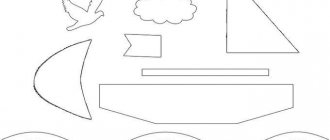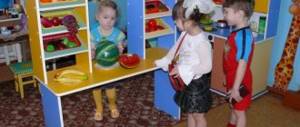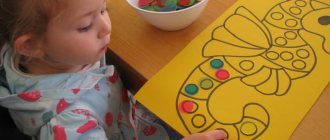The place of aesthetic culture of education in society
Aesthetic culture is one of the elements of public culture, one of its oldest forms, which arose in the era of primitive man. Only over time did it acquire a somewhat independent meaning, but even now it appears in the form of a kind of philosophy, reflecting a person’s rich attitude to the world, his desire for perfection and ideal.
Since ancient times, the idea of beauty has been interpreted quite broadly: health, wealth, and everything that was useful were considered beautiful. Beauty was considered not only from the point of view of aesthetics, but also ethics, economics, and a perfect object or state was recognized as beautiful.
In our society, there is a clearly visible gap between the social significance of aesthetic culture and its real state. Traditional cultural and moral values are replaced by rational and logical ones, which leads to a lack of emotionality in relationships, rudeness and cynicism, and a primitivization of life guidelines.
Depending on a specific era of life, ideas about beauty may change. The concept of beauty is rather inherent in external form. The beautiful does not depend on time and carries within itself harmony, perfection, and humanistic spiritual components.
The modern busy, overpopulated world is educationally untenable. It produces only educated consumers, and the principle of aesthetic education presupposes the creation of conditions for development, the creative disclosure of each individuality.
Aesthetic education
It can be difficult to apply all the theoretical components of aesthetic education in everyday life. After all, the impact of aesthetics on a person, learning and improving skills occurs throughout his adult life. It depends on numerous factors: family, school, society. Let's take a closer look at them.
In family
Everything starts with family. There is no exaggeration in this phrase. The baby’s first steps, his words, his smile are addressed to the closest and dearest people from his environment. They were made with the support of these close people and under their guidance. In this case, the behavior of parents is an aesthetic ideal to which children unconsciously strive.
Nurturing aesthetics in the family consists of several components:
- Neatness of family members, cleanliness of the house;
- Emotional and moral atmosphere;
- Ability to express emotional attachments;
- Having rules of family behavior and maintaining discipline.
The basis for the development of a child’s aesthetic consciousness are the following factors:
- Singing lullabies by mother;
- Evaluating the beauty of a picture, poem, song;
- Drawing objects of the surrounding reality;
- Reading fairy tales and poems;
- Conducting conversations during which the child receives comprehensive answers to his questions;
- Decoration of a children's room, the entire living space.
In addition to the child’s unconscious perception of the surrounding reality, aesthetic education in the family should be supplemented by the influence of parents. It consists of the following sequential educational aspects:
- Instill in the child observation skills and the ability to analyze what he sees;
- Compare shapes, colors, smells, structure of objects;
- Focus children’s attention on the surrounding “little things”: leaves, butterflies, features of the shape of buildings;
- Select things for everyday use with taste, tell the child about their advantages;
- Allow your child to independently choose between the things they like.
Since aesthetic education is closely related to other educational sections, activities aimed at developing the perception of beauty can be carried out during any type of child activity.
At school
Work at school to develop intellectual, moral, and aesthetic abilities is difficult. This complexity is caused by the presence or absence of an unconditional base of certain skills and abilities that are laid down in the family. In their absence, it is difficult for teachers to influence the child’s personality, develop, improve him, and make him a connoisseur of beauty.
However, this does not mean at all that the lack of a craving for beauty and good taste should become the reason for pedagogical inaction. The work of teachers should be planned in such a way that in every academic subject and extracurricular activity the idea of the impact of aesthetics on human life runs like a red thread.
Finding a child in a children's group, where aesthetic values are valued and created, leaves a positive imprint on his consciousness and morality. Under the influence of social influence, the formation of those character traits that are so necessary for a harmoniously developed person slowly but surely occurs. This is especially important for those children who were unable to undergo aesthetic “adaptation” with their parents.
In society
The older a person gets, the more difficult it is for him to “remake” himself. The same rule applies to aesthetic possibilities. A person who has lived for many years with an unconscious denial of aesthetic things that are “unnecessary” to him is unlikely to be able to learn to admire the immortal creations of great classical musicians in one evening.
There is only one way to join the world of beauty: with the help of the “ardent” desire of the person himself. Such a desire arises, as a rule, solely under the influence of society, that is, a person’s immediate environment.
However, this does not mean at all that only those adults who “lost” in childhood the opportunity to develop the amazing ability to see beauty in everything should engage in the development of aesthetics. Taste develops and improves throughout human life. Stopping in this case means a spiritual illness, which can end tragically for the “patient” by devaluing all previously significant aesthetic factors.
Goals and objectives
The goal of aesthetic education is simple and complex at the same time: to teach a person to see beauty in all its manifestations, analyze and evaluate what he sees, and take an active part in its creation.
The tasks of raising an aesthetically developed personality are also multifaceted. They are conditionally divided into 2 groups.
Group 1 of tasks works in the following direction:
- Forms taste and a creative attitude towards the surrounding nature;
- Develops the ability to feel, hear, see beauty in nature, art, literature, and people’s actions;
- Fosters the need to contemplate beauty and excellent artistic taste.
Group 2 of tasks is aimed at developing the skills to create beauty in art and everyday life.
Only the close interaction of these tasks will allow achieving high educational results.
What is aesthetic education
Aesthetic education in pedagogy is understood as a purposeful influence on the formation of human personality. At the same time, the choice of means of such influence is huge, starting from a work of classical art and ending with the natural beauty of nature. It is necessary to instill the skills of self-knowledge and self-improvement through the prism of beauty from early childhood.
Parents, concerned about the future of their baby, begin raising him from birth. Beautiful bright toys, classical music, affectionate faces of parents - these are the main components of the educational process. Harmony and beauty in things, words, and actions allows a little person to see, feel and appreciate beauty.
“Correct” life guidelines are “picked up” by kindergartens and schools. In educational institutions, they deepen moral concepts through the prism of beauty and kindness, and teach, using the examples of literary heroes, to choose the right path in life. With the help of paintings, he learns to dream and then make dreams come true. In labor arts lessons, learn the science of beautiful “dirty” hands and the ability to create masterpieces in everyday life.
However, in practice, the path of aesthetic education is thorny and complicated. Often its incorrect construction or complete absence is associated with the illiteracy of adults who themselves, without a clear understanding of it, cannot convey the value of the beauty of the world around them.
Proper education of taste involves learning the ability to perceive beauty in all its manifestations: in art, work, feelings. It is important to instill feelings and tastes, the need to take part not only in the creation of beauty, but also in its creation.
A common thread in aesthetic education should be the idea of the need to translate beauty into everyday life through examples and examples of art. You cannot admire the beauty of classical music, enjoying listening to it, and use foul language when you go outside the theater. The ability to appreciate “samples” of art allows you to transfer beauty into everyday things: everyday life, work, family.
The close relationship between aesthetics in everyday life is actively manifested in everything. Creativity shapes memory, intelligence, and the ability to plan. The opportunity to appreciate the beauty of nature - patriotism, love for the small homeland. Complex emotions and feelings that arise from the perception of art teach morality.
In an aesthetically developed personality, all manifestations of life are harmonious and beautiful. They require “equal” development of physical, moral and intellectual culture, which needs to be improved throughout one’s life.
Correctly formed taste allows you to appreciate life's manifestations of ugliness and beauty, comedy and drama. It also requires daily improvement, “testing” and development. Taste can only be formed under the influence of an aesthetic ideal. And here a person’s social environment plays an important role: a person’s correct choice depends on its harmony and morality.
An important component of aesthetic education is the formation of skills of moral behavior, respect for social and universal laws, and love for all living things around us.
Education of aesthetics, like all education, is a long process. The big “picture” of a beautiful human soul is drawn gradually: every year of human life adds a new stroke to it. What it will be like, how bright the colors will be, depends on the life circumstances, family, and social environment of the person.
Methods and means
In pedagogy, many methods have been developed to help develop a person’s taste. However, so far none of them can replace the personal example of loved ones. The psychological and moral environment in which a person lives and grows is also important. By personal example, the student learns the following things:
- Communicate;
- Take care of yourself;
- Treat yourself and others.
Other methods are closely related to the means by which the effectiveness of education is achieved. We list the most popular of them:
- Conversations;
- Creative workshops;
- Classes in clubs, sections;
- Visiting exhibitions, theaters, museums;
- Participation in festivals, competitions of intellectual and creative content;
- Home creative evenings.
We have already said that the success of aesthetic education largely depends on when it was started. The sooner a child begins to comprehend the beauty of the reality around him, the faster he will form the correct aesthetic ideals, which he will strive for throughout his life.
Play is the second most effective opportunity to educate a harmonious personality who knows how to appreciate beauty. Being part of the game scenario, its protagonist, the child accumulates correctly formulated aesthetic impressions and delves into the rules of moral behavior. The game prepares the individual to “enter” the life arena. The development of speech helps to form an idea of the richness of language and culture and instills the need for reading.
Participation in holidays, concerts, exhibitions is the next link in the development of taste through direct participation in the creation of beauty. Visiting theaters, museums, exhibitions, and concerts improves the inclinations of taste, forms and improves the aesthetic ideal.







